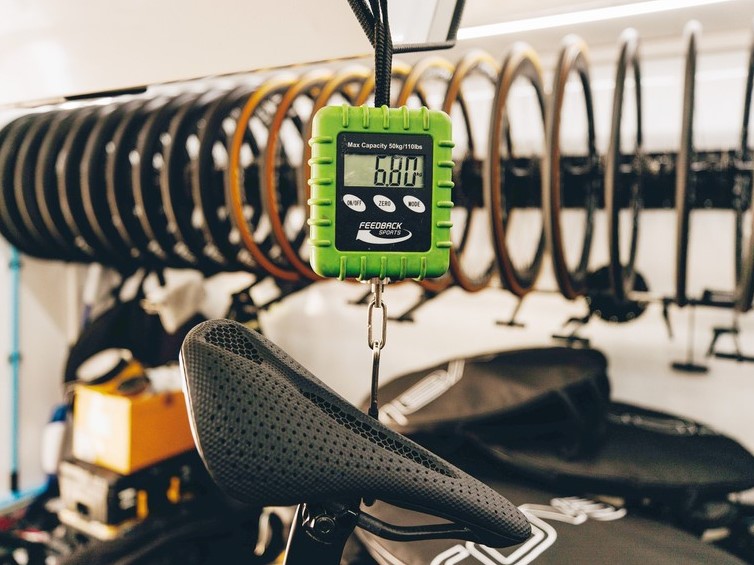What is the mass of a bicycle? This seems like a simple question, but determining the weight of a bike can actually get complex. Bicycle mass depends on many factors including the frame material, components, accessories, and more. While heavy steel cruisers may weigh 22 kilograms or more, high-performance road bikes can tip the scales at just 5 kilograms. So what is the typical mass of a bicycle? In this in-depth post, we’ll explore the key considerations in estimating bicycle weight and why those numbers matter to different cyclists. Weighing all the variables, what is the mass of a bicycle? Let’s take a closer look.
What is the Mass of a Bicycle?
Determining the mass of a bicycle is tricky because there is no single answer—bike weights vary considerably based on several key factors. At the most basic level, the type of cycling impacts weight. Lightweight road bikes designed for speedy rides average around 8-11 kg (18-24 lbs). Mountain bikes require sturdier, suspension-equipped frames to handle rugged terrain, tipping scales at 11-15 kg (24-33 lbs). Hybrids and BMX models fall somewhere in between road and mountain bike masses.
Beyond category, frame materials make a big difference. Carbon fiber frames are exceptionally light, while steel and aluminum frames weigh progressively more. Component choices also affect mass. Lightweight wheels, cassettes, and other high-end parts trim grams, while accessories like racks and fenders add them back. Even frame size influences weight, with larger frames generally heavier than smaller versions.
With all these variables, stating a single universal bicycle mass is impossible. A lightweight carbon road bike with high-end components in a smaller frame will weigh far less than a steel hybrid bike with heavy accessories in a larger frame size. The range spans from as little as 5 kg for a top-tier road racer to 30+ kg for a heavy-duty utility bike. By considering key factors like intended use, frame material, components, and size, cyclists can estimate the mass of a particular bike model to choose the ideal ride for their needs.
Why Bicycle Weight Matters
For most casual riders, bicycle weight is not a major concern. However, for cycling enthusiasts, racers, and commuters, every gram counts. Here are some key reasons why bike weight matters:
- Performance: Lighter bikes accelerate faster and are easier to maneuver up hills. Less weight means more speed.
- Comfort: Carrying around extra mass can tire you out more quickly on long rides. A lighter bike reduces fatigue.
- Convenience: Lightweight bikes are easier to carry up stairs, lift onto car racks, etc. This improves portability.
- Durability: Materials like carbon fiber and titanium used to shed weight are also highly durable and withstand years of use.
So while heavy steel cruisers work fine for short jaunts, a featherlight carbon race bike is ideal for performance-focused cycling and all-day rides. Knowing bike weights helps cyclists choose the ideal model for their needs.
Estimating Bicycle Mass
So what’s the typical mass of a complete bicycle? Here are some general estimates:
- Road bike: 6 to 9 kilograms
- Hybrid bike: 9 to 13 kilograms
- Mountain bike: 10 to 15 kilograms
- Cruiser: 15 to 22 kilograms
- Electric bike: 18 to 25 kilograms
Of course, weights vary widely within each category based on materials, components, and features. High-end road bikes can weigh as little as 5 kilograms, while heavy-duty e-bikes might tip the scales at 30+ kilograms.
But in general, these ranges cover most stock bicycle configurations sold today. Custom builds allow further fine-tuning of bike mass. Next, let’s look at the factors that determine overall bicycle weight.
The Frame: Key Considerations
The frame is the heart of the bike, connecting all the components. It also contributes the most to overall bicycle mass. Frame materials and construction determine how light or heavy that central bike structure will be:
Materials
- Carbon fiber is the lightest and stiffest mainstream bike frame material, ranging from 750 grams for racing bikes to 1,500 grams for e-bikes. The advanced composite material provides an exceptional strength-to-weight ratio.
- Aluminum alloy strikes a nice balance between affordability, durability and light weight, ranging from 1,750 to 2,500 grams depending on grade. Heat-treated aluminum keeps costs down while shedding excess mass.
- Steel is making a comeback thanks to new alloys and butting techniques that slim down weight while retaining the material’s vaunted comfort. Modern steel road frames can weigh around 1,500 grams.
- Titanium boasts an outstanding strength-to-weight ratio and rides beautifully. But the expensive alloy results in premium prices for complete titanium bikes. Frame mass runs 1,750 to 2,250 grams.
- Chromoly steel is valued for its vibration damping. This affordable material hits the scales around 2,500 to 3,500 grams for mass-produced models.
Construction
The frame’s construction approach also impacts mass:
- Monocoque carbon frames with seamless one-piece front triangles save weight via reduced joints and materials.
- TIG welding on aluminum and titanium frames allows precise joint construction with minimal material buildup.
- Butting involves varying tube wall thicknesses to reduce weight in non-critical areas while retaining strength. Butted alloy tubes pare away excess grams.
- Geometry including compact rear triangles and dropped seatstays helps minimize the bike’s footprint and overall frame mass.
So two high-quality carbon frames could weigh differently based on these design and fabrication factors. Efficient construction is key for the lightest bicycles.
Components: Trimming the Fat
Apart from the frame, components like the transmission, brakes, wheels and cockpit make up a sizable portion of overall bike weight. Here are areas ripe for mass reductions:
- Groupset: Swapping out heavy steel cranksets and chains for lighter aluminum or carbon fiber versions can significantly cut weight.
- Wheels: Lightweight carbon wheelsets help reduce rolling mass and rotational inertia dramatically compared to budget alloy wheels.
- Tires: Higher TPI (threads per inch) tires fold smaller while reducing rubber mass. But don’t sacrifice too much puncture protection.
- Saddle: Racing saddles with carbon rails and minimalist padding weigh under 200 grams. Lighter riders can handle these without sacrificing comfort.
- Handlebars: Carbon handlebars save weight over aluminum alloy while damping road vibration. For most riders the savings are modest.
- Pedals: Titanium spindles and carbon bodies slim down pedal mass substantially compared to budget plastic pedals.
- Accessories: Limiting accessories like fenders, racks, lights, bells, etc. avoids adding extra mass. But don’t compromise safety!
With some strategic upgrades, you can trim pounds from a bike without replacing the frame. But component choices involve trade-offs between cost, performance and practicality.
The Rider Matters Most
While having the lightest bike is tempting, focusing solely on frame and components misses the bigger picture. The engine that matters most is the rider. Factors like fitness, skill, and strength make far more difference in performance than a few kilos of bike weight.
A cyclist with well-developed leg muscles and lungs, efficient pedaling technique, and the determination to push hard can ride any bike fast. Take a Tour de France rider as an example. Put them on a heavy steel cruiser and they will still beat most recreational riders on cutting-edge carbon race bikes. The rider’s physiology and effort overcomes small disadvantages in equipment mass.
On the other hand, an unfit or inexperienced recreational cyclist may gain minimal speed or performance benefit from an ultra-light carbon fiber machine. The rider lacking endurance, skill, and power can’t fully utilize the performance gains from the lightweight components and frame. The human engine remains the limiting factor.
This reveals a truth about bicycle mass and performance – the rider matters far more than the machine. Extras fitness provides a bigger speed boost than extra cash spent reducing bike weight. Getting a bit lighter and stronger makes much more impact than trimming a couple pounds off the bicycle. And learning efficient riding techniques like pedal cadence and drafting skillsfurther maximizes speed and handling no matter the bike weight.
Before spending heavily on the lightest gear, focus first on improving your body, fitness, skills, and determination. Choose a capable bike for your needs and budget, then concentrate on excelling as a cyclist. While bike mass deserves some consideration, never lose sight that the rider is the true engine that unleashes a bike’s potential.
Weighing Your Options
As this lengthy discussion shows, determining bicycle mass takes weighing many factors (pun intended). To summarize:
- Frame material and construction methods create the bike’s central structure and account for the largest share of heft. Carbon fiber, aluminum, titanium and steel each have pros and cons.
- Components like the drivetrain, wheels, tires and cockpit determine the build’s overall mass. Lightweight versions trim grams at a premium cost.
- Bike type plays a key role, with svelte road bikes at one end and sturdy e-bikes at the other end of the mass spectrum.
- Rider fitness, skill and strength outweigh small bike weight differences when determining speed and handling. Focus on pedal power!
For casual use, bike weight is not critical. But understanding how frame, components and type impact mass helps cyclists choose bikes suited for their needs and goals. While not as simple as a single universal bike weight, estimating key ranges provides a solid starting point.
As we’ve seen, answering “What is the mass of a bicycle?” involves weighing many complex factors. While ultra-light bikes grab headlines, smart riders look beyond the hype and choose a capable bicycle suited for their body, skills, and riding style. For more insights to choose your perfect ride, check out our blog Best Bike Parks covering the ideal bikes for different terrains. Whether you seek a featherweight racer or a sturdy utilitarian ride, understanding bike mass gives you the knowledge to pick the best bicycle for your needs.









